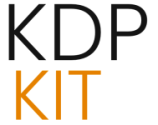Side Hustles: Your Fast Track to Early Retirement in 2025?

It’s the dream, right? Ditching the alarm clock, saying goodbye to the daily grind, and living life on your own terms, decades before anyone expects you to. In 2025, with inflation still biting and the economy feeling a bit shaky, the idea of escaping the 9-to-5 is more appealing than ever. This whole “Financial Independence, Retire Early,” or FIRE movement, is really picking up steam. It’s all about finding new ways to make money, ways that could actually let you kick back and relax way sooner than you ever thought possible. But, like with any amazing-sounding solution, you gotta wonder: how much of this is real, and how much is just wishful thinking? Let’s dive in.
The FIRE Movement: Chasing Early Retirement
Retiring early isn’t exactly a new idea, but it’s really exploded in popularity lately, thanks in large part to the FIRE movement. The basic idea is to save and invest like crazy so you can become financially independent and ditch your job way before the usual retirement age. The goal is to build up enough money to cover your living expenses forever. A lot of people follow the “4% rule,” which basically says you can safely take out 4% of your investments each year without running out of money. So, if you need $40,000 a year to live, you’d need about $1 million saved up. Sounds like a lot, I know, but people are figuring out ways to get there faster.
FIRE Strategies for 2025: Adapting to Reality
The FIRE movement isn’t stuck in the past, though. In 2025, it’s gotten a lot more flexible. People realize that saving a super strict percentage of your income might not cut it anymore, especially with inflation, rising healthcare costs, and the stock market doing its usual ups and downs. So, instead of the old “Rule of 25” (saving 25 times your annual expenses), many are now aiming for “30x” because inflation eats away at your money faster, and healthcare is getting pricier. Because of this, a lot of folks are now recommending a more cautious withdrawal rate, like 3.25% to 3.5%, instead of the old 4%. It’s all about being realistic with the current economic climate.
Side Hustles: Your Secret Weapon for Early Retirement
In today’s world, side hustles are becoming a really big deal if you want to speed up your journey to early retirement. Relying on just one paycheck just doesn’t seem to cut it anymore when living costs keep going up and the economy feels uncertain. Lots of people, no matter their age, are taking on extra work to boost their income, build more wealth, and feel more secure financially. Why? Well, wages haven’t exactly been soaring, many people want more control over their lives, and honestly, a lot of us aren’t exactly thrilled with the traditional job setup anymore.
Diversifying Your Income: The Smart Way to Build Wealth
The push for early retirement in 2025 is all about not putting all your eggs in one basket. Instead of just relying on your main job, people are creating multiple income streams. This multi-pronged approach to making money is seen as key to building a strong and stable financial future. It’s like having several backup plans, but instead of backups, they’re all actively working to build your wealth.
Digital Products & Online Courses: Make Money While You Sleep
One of the hottest side hustle categories right now is creating and selling digital products and online courses. The best part? They’re scalable. Once you create them, you can sell them over and over again without much extra work. Think e-books, guides, templates, or even full-blown online courses on whatever you’re an expert in. Platforms like Kajabi or Thinkific make it super easy to offer content that stays relevant, giving you a steady stream of passive income. It’s like planting a money tree that keeps on giving.
For example, imagine you’re a great baker. You could create a comprehensive online course teaching people how to bake sourdough bread from scratch. Once you film the videos, write the guides, and set up the course, you can sell it to hundreds or even thousands of people. Even if you only make $50 per course, that’s a lot of extra cash without you having to be there every single day. Plus, you can keep updating the course as needed, making it an evergreen product.
Another idea is creating digital planners or budget templates. In today’s world, people are always looking for ways to get organized and manage their money better. You could design beautiful, user-friendly planners that people can download and print, or use digitally. Selling these on platforms like Etsy can be a fantastic way to generate passive income. The upfront work is creating the designs, but once they’re listed, they can sell continuously.
Affiliate Marketing: Get Paid to Recommend
Affiliate marketing is another popular way to earn passive income. The concept is simple: you promote other people’s products or services, and when someone buys through your unique link, you earn a commission. The trick to doing well here is building trust with your audience. You need to recommend products that you genuinely believe in and that align with your audience’s interests. If you have a blog or a social media following, this can be a really effective strategy.
Let’s say you have a blog about hiking gear. You could partner with an outdoor equipment company. When you write a review of their backpack and include your affiliate link, and someone clicks that link and buys the backpack, you get a percentage of the sale. It’s not about spamming links everywhere; it’s about providing valuable content and naturally integrating recommendations that will benefit your readers.
You can also use affiliate marketing on YouTube. If you create videos reviewing tech gadgets, you can put affiliate links to those gadgets in the video description. People who watch your reviews and decide to buy the product will click your link, and you’ll earn a commission. It’s a win-win: the company gets a sale, you get paid, and the viewer gets a product they’re interested in, hopefully after watching your helpful review.
Real Estate & The Sharing Economy: Tangible Assets
Investing in real estate, whether it’s buying rental properties or investing in Real Estate Investment Trusts (REITs), has always been a solid way to build wealth over the long term. The sharing economy has also opened up new doors. Think about renting out a spare room on Airbnb, or even your entire house when you’re on vacation. You could even rent out your car when you’re not using it. These ventures can provide a steady cash flow and, hopefully, your property will appreciate in value over time.
Owning a rental property can be a great way to generate passive income. You buy a property, find tenants, and collect rent each month. While there’s management involved, like finding tenants and handling repairs, it can be a very lucrative side hustle. You can also invest in REITs, which are companies that own, operate, or finance income-producing real estate. This allows you to invest in real estate without the hassle of direct ownership.
The sharing economy extends beyond just property. Platforms like Turo allow you to rent out your car when you’re not using it. If you live in a city or travel frequently, your car might be sitting idle for a good portion of the time. By listing it on Turo, you can earn money from it. Similarly, platforms like Getaround offer car-sharing services where people can rent cars by the hour.
Investment-Based Passive Income: Stocks, Bonds, and Funds
Financial investments are still a major way to earn passive income. This includes buying stocks that pay dividends, which means you get a share of the company’s profits regularly. Exchange-Traded Funds (ETFs) are great because they spread your investment across many stocks, which helps reduce risk. Bonds and bond funds are also good for stable income, and index funds give you broad exposure to the stock market. It’s all about making your money work for you.
Dividend-paying stocks are a classic way to earn passive income. Companies that are profitable often share a portion of those profits with their shareholders in the form of dividends. These are usually paid out quarterly. By reinvesting these dividends, you can also compound your returns over time, making your money grow even faster.
ETFs and index funds offer a diversified way to invest. Instead of picking individual stocks, you can buy an ETF that tracks a major index like the S&P 500. This means you own a small piece of all the companies in that index. It’s a simpler and often less risky way to invest in the stock market, and many ETFs also pay dividends.
Bonds are essentially loans you make to governments or corporations. They typically pay a fixed interest rate over a set period. While they’re generally considered less risky than stocks, they also tend to offer lower returns. However, for someone focused on stable income, bonds can be a valuable part of a diversified portfolio.
AI and Tech: Supercharging Your Side Hustles
Artificial intelligence and other tech advancements are really changing the game for side hustles in 2025. AI tools can help you create content, figure out marketing strategies, do research, and even help with scripting and editing for your online courses. This makes it way easier for people to get their ventures off the ground and grow them. For instance, AI can help you brainstorm ideas for your digital products, write product descriptions, or even generate social media posts to promote your offerings.
Think about using AI for content creation. If you want to start a blog, AI writing assistants can help you overcome writer’s block, generate outlines, and even draft initial blog posts. You’ll still need to edit and add your personal touch, but it significantly speeds up the process. Similarly, AI tools can help you design graphics for your website or social media, create video scripts, or even generate music for your videos.
AI is also revolutionizing customer service. Chatbots powered by AI can handle customer inquiries 24/7, answering frequently asked questions and freeing you up to focus on more complex issues. This is especially helpful if you’re running an online store or offering a service where customer interaction is frequent.
For those interested in online courses, AI can assist in creating course materials, generating quiz questions, and even personalizing the learning experience for students based on their progress. This can lead to more effective and engaging educational content.
Navigating the Hurdles: It’s Not All Easy Street
While the idea of retiring early with side hustles sounds amazing, it’s important to remember that it’s not always a walk in the park. Most of these ventures require a significant investment of your time, effort, and sometimes even your own money upfront. Plus, the online world is super competitive, and not every idea takes off like you hope it will. So, be a little skeptical when you see those overly optimistic income projections – they’re often not the full picture.
One of the biggest challenges is time management. You’re likely juggling a full-time job, personal life, and then trying to build a side hustle. It requires serious discipline and organization to make it work. You might have to sacrifice some social activities or hobbies initially to dedicate enough time to your new venture.
Another pitfall is the “shiny object syndrome.” It’s easy to get excited about a new side hustle idea, jump into it, and then a few months later, get distracted by another new, exciting opportunity. Sticking with one or two ventures long enough to see them through is crucial for success. Consistency is key.
And then there’s the financial risk. While some side hustles require minimal startup capital, others, like real estate or starting a product-based business, can involve significant investment. You need to be prepared for the possibility that you might not see a return on your investment for quite some time, or that the venture might not be as profitable as you anticipated.
Frugality: The Cornerstone of FIRE
At the heart of the FIRE movement, and really any pursuit of early retirement, is a commitment to being frugal and spending intentionally. This means making sure your spending aligns with what’s truly important to you and cutting out unnecessary costs to save and invest more. As Vicki Robin, a big name in the FIRE world, famously said, “I buy my freedom with my frugality every day.” It’s about making conscious choices with your money.
Frugality isn’t about deprivation; it’s about being mindful. It’s about asking yourself if a purchase truly adds value to your life or if it’s just a fleeting impulse. This could mean cooking more meals at home instead of eating out, finding free or low-cost entertainment options, or buying quality items that last longer instead of cheap, disposable ones.
Budgeting is a critical part of frugality. Knowing where your money is going allows you to identify areas where you can cut back. Many people find success using budgeting apps or simply tracking their expenses in a spreadsheet. The goal is to create a budget that supports your financial goals, including saving for early retirement.
Intentional spending also involves thinking about the long-term implications of your purchases. For example, buying a reliable, fuel-efficient car might cost more upfront than a cheaper, less efficient model, but it can save you a significant amount of money on gas and maintenance over the years. This kind of forward-thinking approach is central to building wealth and achieving financial independence.
The Mental Game: Preparing for Early Retirement
Beyond just the numbers, the psychological shift to early retirement is also really important. Some people find it tough to go from a structured work life to having all that free time. Side hustles can actually act as a bridge, giving you a sense of purpose, a routine, and social interaction during that transition. Plus, just the act of pursuing financial independence can really cut down on money-related stress, even if you don’t end up retiring super early.
The identity shift can be significant. For many, their job is a big part of who they are. Suddenly not having that structure can feel disorienting. Having a side hustle that you’re passionate about can provide a new identity and a sense of accomplishment. It can be a way to stay engaged and feel productive without the pressures of a traditional job.
It’s also about learning to manage your time effectively when you don’t have external deadlines. Without a boss or set work hours, it’s easy to fall into procrastination or simply not know what to do with yourself. Developing self-discipline and creating your own schedule is crucial for a successful transition into early retirement or even just a more flexible lifestyle.
Furthermore, the financial security that comes with pursuing FIRE can have a profound impact on mental well-being. Knowing that you have a plan and are actively working towards financial independence can reduce anxiety about the future. This peace of mind is often as valuable as the financial freedom itself.
The Verdict: A Balanced View on the Early Retirement Dream
The story of achieving early retirement through side hustles is definitely gaining traction in 2025, fueled by a desire for financial freedom and a more flexible life. While the FIRE movement offers a solid roadmap for financial independence, whether side hustles become your main ticket to early retirement really depends on your own hard work, smart planning, and a realistic look at how much you can actually earn. Mixing in technology, staying frugal, and having clear financial goals are super important. Ultimately, chasing early retirement with side hustles is a compelling path, but it demands dedication, flexibility, and a clear-eyed view of both the amazing opportunities and the genuine challenges involved.
It’s not a get-rich-quick scheme, and it requires a significant commitment. But for those willing to put in the effort, diversify their income, and manage their finances wisely, the dream of early retirement and financial freedom in 2025 is more attainable than ever. The key is to approach it with a realistic mindset, a willingness to learn and adapt, and a clear understanding of your own financial goals and capabilities.
So, are side hustles the magic key to unlocking early retirement? For some, absolutely. For others, they might be a way to supplement income, build financial resilience, or simply pursue a passion project. Whatever your goal, the strategies discussed here can help you build a more secure and flexible financial future. It’s about taking control of your financial destiny, one side hustle at a time.
If you’re interested in learning more about the FIRE movement, check out Mr. Money Mustache. For tips on starting a side hustle, this article on NerdWallet is a great resource. Understanding investing is also key, so take a look at Vanguard’s educational resources. To explore passive income strategies further, consider reading up on passive income on Investopedia. And for a deeper dive into frugality, Vicki Robin’s book “Your Money or Your Life” is highly recommended, and you can find more about her work here.
You might also find these related topics helpful:
- How to Save Money Fast
- Best Investing Apps for Beginners
- Side Hustles for Stay-at-Home Parents
- Understanding Inflation and Its Impact
- Creating Passive Income Streams
Here are some videos that might offer additional insights:
Here are some videos that might offer additional insights:
Here are some videos that might offer additional insights:







